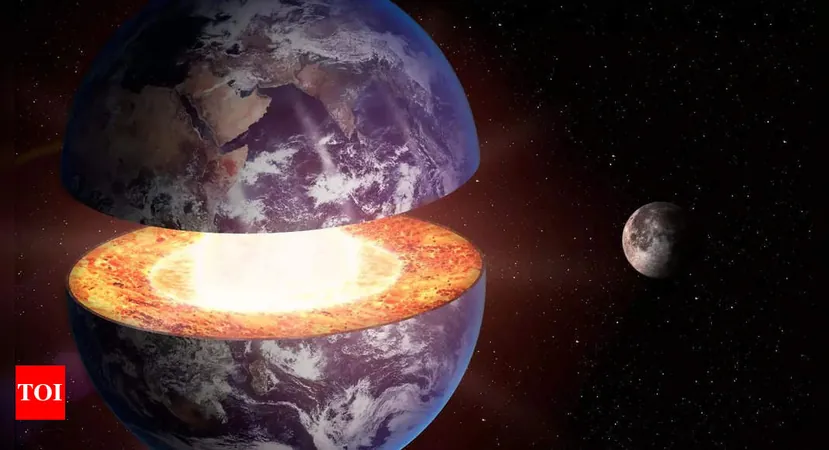
ESA 2024 Highlights: The Ariane 6 Soars into Space!
2024-12-17
Author: Olivia
ESA 2024 Highlights: The Ariane 6 Soars into Space!
In 2024, the European Space Agency (ESA) established itself as a leader in global space innovation, launching numerous groundbreaking missions and cutting-edge satellites. Notably, this year marked the triumphant return of Europe’s independent access to space, highlighted by the first successful flight of the Ariane 6 rocket—a milestone that promises to shape the future of space exploration.
While the Ariane 6 launch stole the spotlight, it was just one of many remarkable achievements for ESA this year. The Vega rocket also had its final launch, preceded by the successful return of the upgraded Vega-C, which carried the important Sentinel-1C satellite aimed at monitoring Earth’s land and oceans.
ESA’s ambitious reach extended to our Solar System with the BepiColombo mission, a collaboration with the Japan Aerospace Exploration Agency (JAXA), which performed two critical flybys of Mercury as it prepares to enter orbit around the planet in 2026. In another historic event, the Juice spacecraft completed a unique Moon-Earth double flyby, paving the way for its journey toward Jupiter as it becomes the first spacecraft to perform this fascinating maneuver.
In terms of planetary defense, ESA commemorated a significant moment two decades after the Rosetta mission with the launch of the Hera spacecraft. This new mission is set to explore the asteroid Dimorphos, expanding our understanding of potential threats from space.
2024 also witnessed key developments with Europe’s Galileo satellite constellation, which grew by four additional satellites, coupled with enhancements to the ground systems. Not to be overshadowed, the Proba-3 mission was launched, involving two satellites flying in precision formation to create a solar coronagraph, providing critical insights into the Sun’s corona.
Human spaceflight reached a new level of collaboration as ESA astronaut Andreas Mogensen continued his Huginn mission aboard the International Space Station (ISS). Notably, he shared the experience of space with fellow astronaut Marcus Wandt on his Muninn mission—marking a historic first where two Scandinavians floated in orbit simultaneously!
As ESA graduates its latest class of astronauts, two standouts, Sophie and Raphaël, have been assigned to long-duration missions aboard the ISS scheduled for 2026. This renewed vigor in human spaceflight underscores Europe’s commitment to contributing to international scientific endeavors.
Moreover, the establishment of the LUNA facility in partnership with DLR marks significant progress toward lunar exploration, alongside the delivery of the third European Service Module for NASA’s Orion spacecraft, integral to the Artemis program. This is complemented by Europe’s involvement in the international Lunar Gateway and the development of a lunar lander named Argonaut.
With the launch of ESA Moonlight, Europe is set to establish its first dedicated satellite network for lunar communication and navigation, underpinning ambitious plans for future lunar missions.
As 2024 concludes, ESA’s myriad advancements have solidified Europe’s pivotal role in space exploration. With landmarks achieved this year, the agency is poised to ignite the spirit of exploration and innovation, shaping the future of space for generations to come. Don't miss out—stay tuned for ESA's next groundbreaking ventures!









 Brasil (PT)
Brasil (PT)
 Canada (EN)
Canada (EN)
 Chile (ES)
Chile (ES)
 España (ES)
España (ES)
 France (FR)
France (FR)
 Hong Kong (EN)
Hong Kong (EN)
 Italia (IT)
Italia (IT)
 日本 (JA)
日本 (JA)
 Magyarország (HU)
Magyarország (HU)
 Norge (NO)
Norge (NO)
 Polska (PL)
Polska (PL)
 Schweiz (DE)
Schweiz (DE)
 Singapore (EN)
Singapore (EN)
 Sverige (SV)
Sverige (SV)
 Suomi (FI)
Suomi (FI)
 Türkiye (TR)
Türkiye (TR)